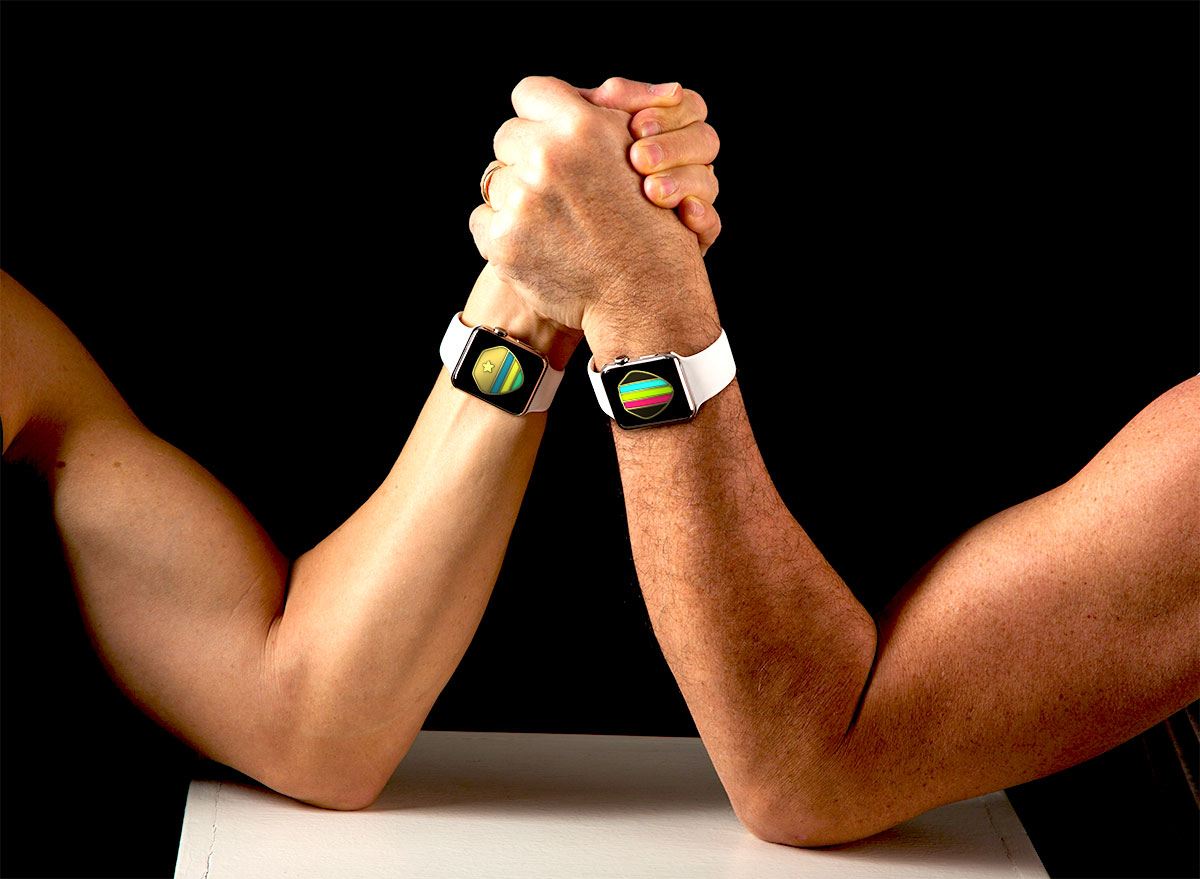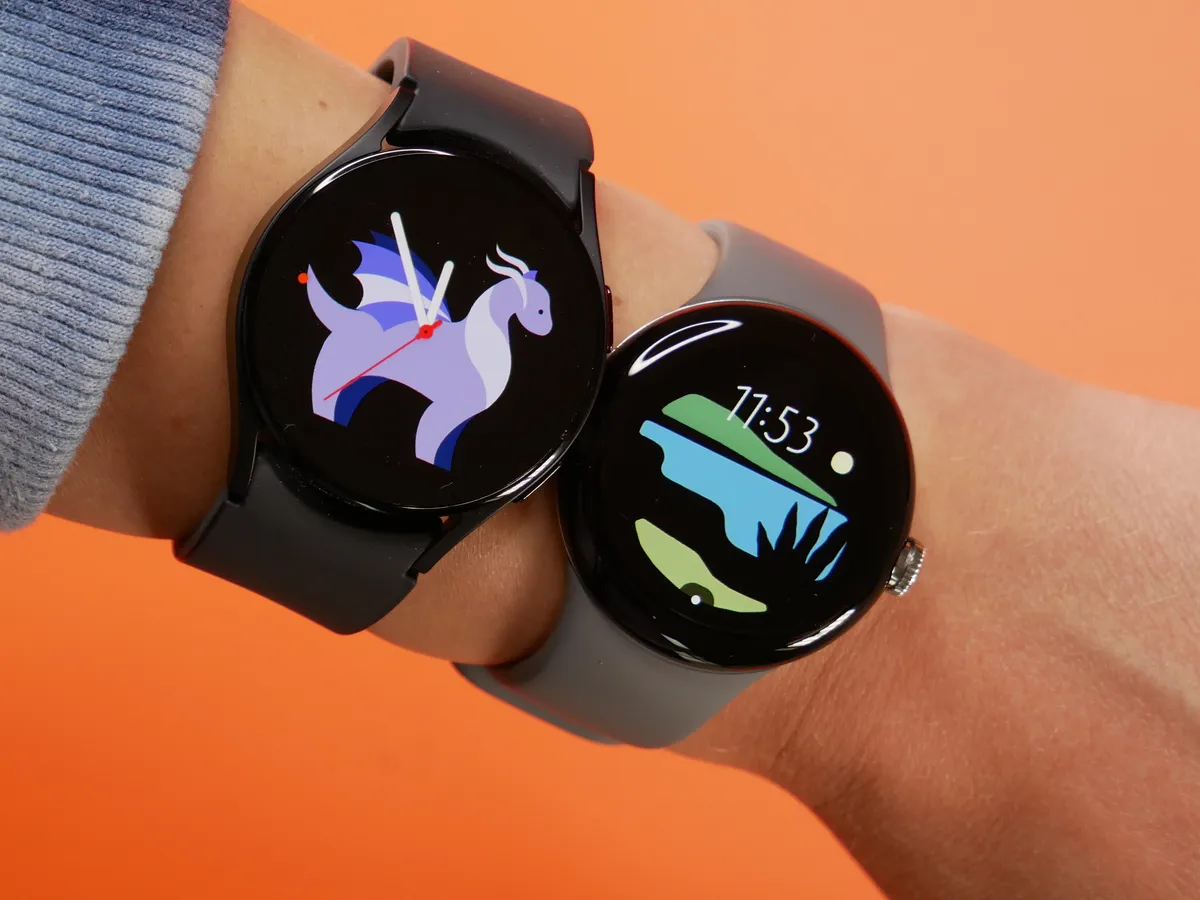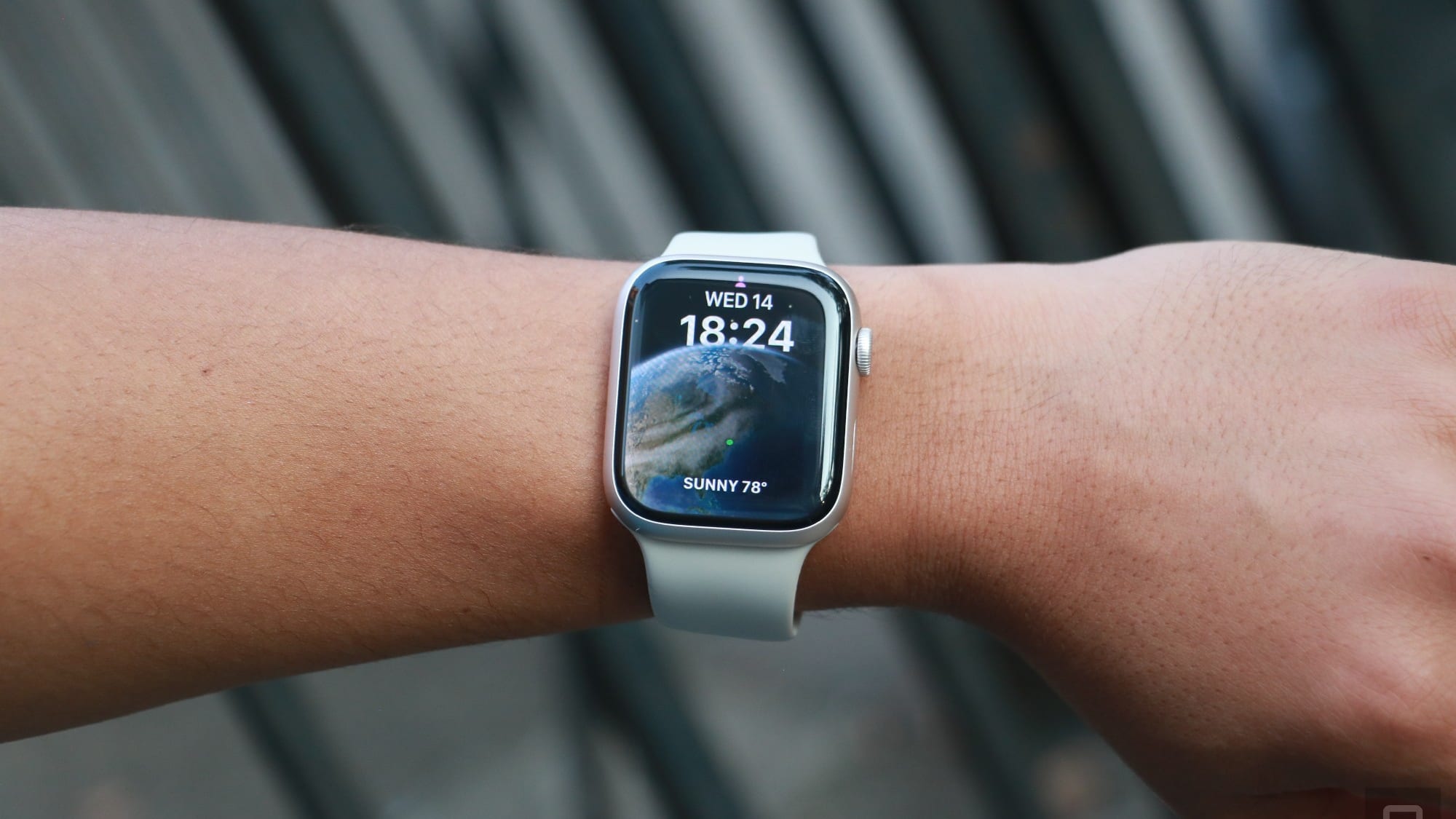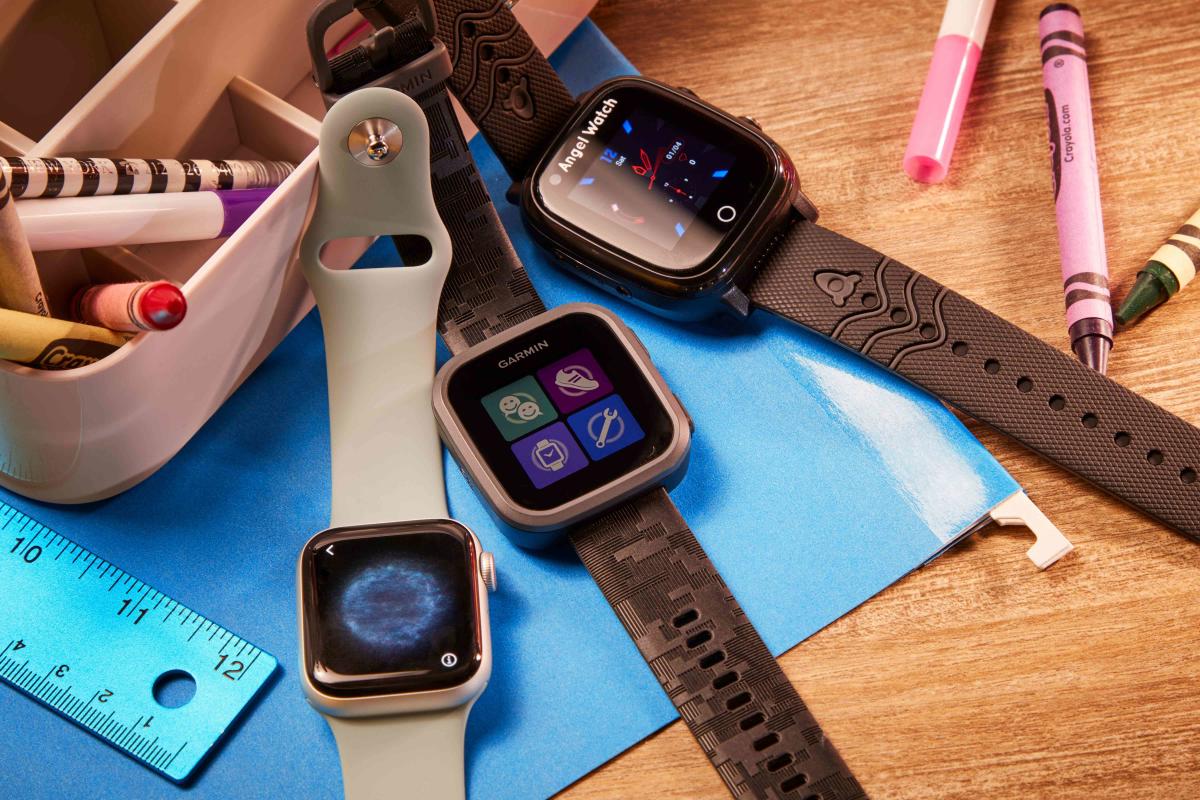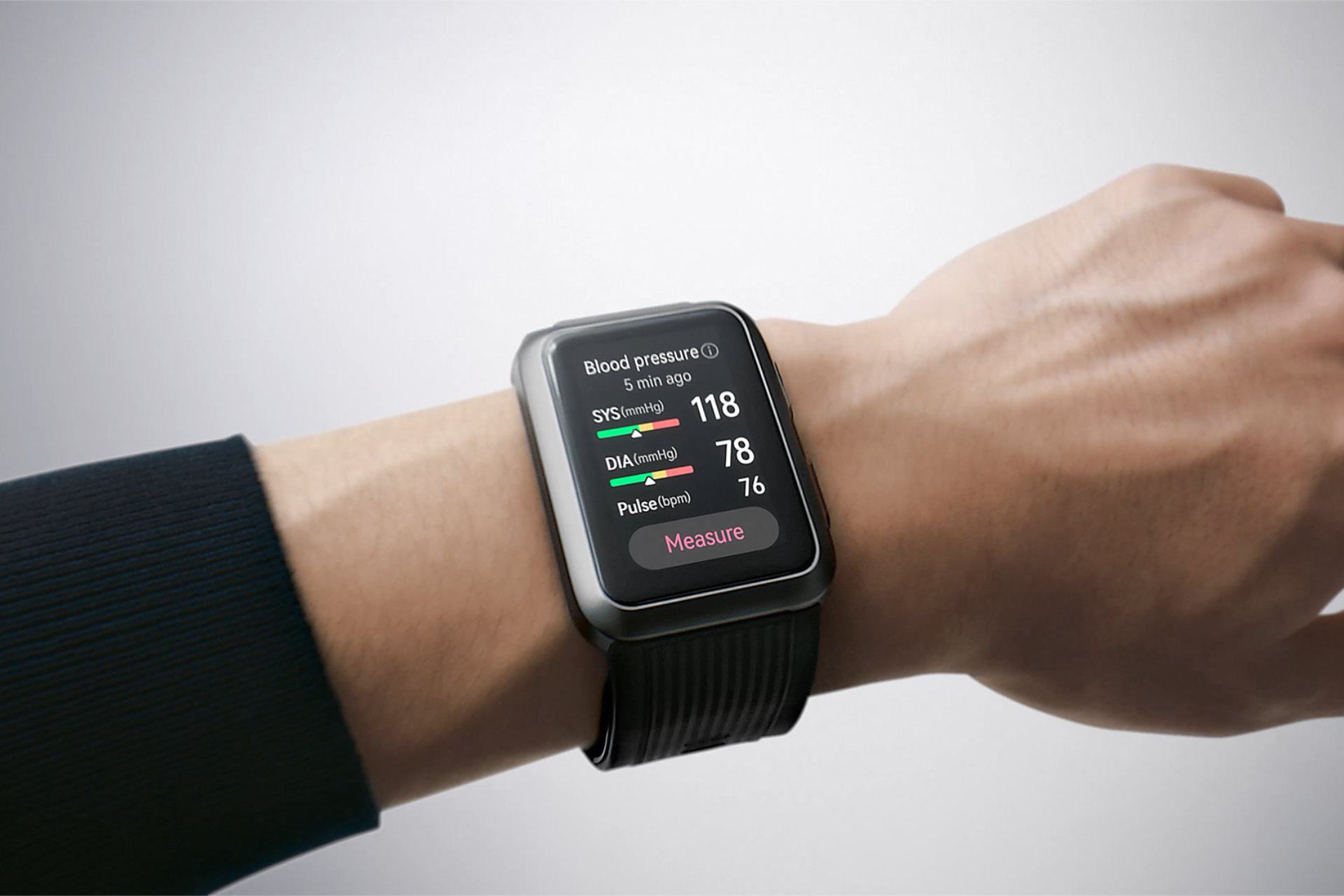Introduction
In today’s fast-paced world, getting a good night’s sleep is more important than ever. Deep, restorative sleep is crucial for our overall health and well-being. To help people monitor their sleep patterns and improve their sleep quality, wearable technology has come to the forefront. One such popular device is the Apple Watch, known for its wide range of features and capabilities.
The Apple Watch offers a sleep tracking feature that allows users to keep tabs on their sleep duration and quality. With this feature, users can gain valuable insights into their sleep patterns, identify trends, and make necessary adjustments to optimize their sleep habits. However, it is essential to understand just how accurate the sleep tracker on the Apple Watch is.
In this article, we will delve into the details of the sleep tracking feature on the Apple Watch, explore how it works, and assess its accuracy. We will also discuss the factors that can influence its accuracy and compare it to other sleep-tracking devices on the market. Lastly, we will provide tips on how to improve the accuracy of the Apple Watch sleep tracker for more reliable results.
Understanding the effectiveness of the Apple Watch sleep tracker can empower users to make informed decisions about their sleep routines and overall health. So, without further ado, let’s dive into the world of sleep tracking with the incredible Apple Watch.
Sleep Tracking Feature on Apple Watch
The sleep tracking feature on the Apple Watch aims to provide users with a comprehensive understanding of their sleep patterns. With this feature, users can monitor their sleep duration, track the different sleep stages, and even set sleep goals to improve their sleep habits.
Apple Watch uses a combination of sensors and algorithms to track sleep. The built-in accelerometer detects movements and measures the duration of sleep. It can differentiate between periods of wakefulness, light sleep, deep sleep, and REM sleep, allowing users to see the breakdown of their sleep stages.
Additionally, Apple Watch utilizes heart rate sensors to provide further insights into sleep quality. It measures fluctuations in heart rate during sleep, highlighting times of restlessness or elevated heart rate. This information can help users identify potential disturbances during sleep and make necessary adjustments for optimal rest.
One of the standout features of the Apple Watch sleep tracker is its Wind Down mode. This mode aims to create a calm and relaxing environment before bedtime by enabling users to customize a routine. It suggests activities like listening to soothing music, practicing mindfulness, or using meditation apps to help users wind down and prepare for sleep.
Moreover, the sleep tracking feature is seamlessly integrated into the Apple Health app on the iPhone. This app provides users with a comprehensive summary of their sleep patterns, allowing them to view long-term trends and analyze their sleep quality over time. The app also provides personalized recommendations based on sleep data, helping users develop healthier sleep habits.
In summary, the sleep tracking feature on the Apple Watch offers a holistic approach to monitoring and improving sleep. With its combination of sensors, heart rate monitoring, and Wind Down mode, users can gain valuable insights into their sleep patterns and make necessary adjustments for a better night’s rest.
How Does Apple Watch Track Your Sleep?
Apple Watch utilizes a combination of sensors and algorithms to track and analyze your sleep patterns. Let’s take a closer look at how this innovative device tracks your sleep.
The primary sensor that the Apple Watch uses for sleep tracking is the built-in accelerometer. This sensor detects movements and measures the duration of your sleep. It can differentiate between periods of wakefulness, light sleep, deep sleep, and REM sleep based on movement patterns. By analyzing these movements, the Apple Watch can provide a comprehensive breakdown of your sleep stages.
In addition to the accelerometer, the Apple Watch also makes use of its heart rate sensor to gather data on your sleep quality. The heart rate sensor measures your heart rate throughout the night, providing insights into periods of restlessness or changes in heart rate. By monitoring these fluctuations, the Apple Watch can indicate whether your sleep was disrupted or whether you experienced deep, restful sleep.
Furthermore, the Apple Watch incorporates machine learning algorithms to improve the accuracy of its sleep tracking. Over time, these algorithms adapt to your sleep patterns and become more precise in categorizing your sleep stages. The more data it gathers, the better it becomes at discerning between different sleep stages and providing accurate sleep analysis.
When using the sleep tracking feature, it is essential to wear your Apple Watch while you sleep. The watch must remain in contact with your wrist and should be snug but not tight. It is recommended to charge your Apple Watch before going to bed to ensure it has enough battery life to track your sleep throughout the night.
After waking up, you can view the detailed sleep data collected by the Apple Watch in the Health app on your connected iPhone. The Health app provides a visual representation of your sleep duration, sleep stages, heart rate variations, and other sleep-related metrics. This information allows you to gain insights into your sleep patterns and make informed decisions about your sleep habits.
Overall, the Apple Watch combines its accelerometer, heart rate sensor, and machine learning algorithms to track and analyze your sleep. Through these technologies, it provides valuable data and insights to help you understand and optimize your sleep patterns.
Accuracy of Apple Watch Sleep Tracker
The accuracy of the sleep tracker on the Apple Watch has been a topic of discussion among users and experts. While it provides valuable insights into sleep patterns, it’s important to understand the limitations and factors that can affect its accuracy.
Overall, the Apple Watch sleep tracker provides a good estimation of sleep duration and the different sleep stages. The built-in accelerometer is effective in detecting movements and determining periods of wakefulness and sleep. It can give a fairly accurate representation of when you fall asleep and when you wake up.
However, the accuracy of sleep stage identification, such as distinguishing between light sleep, deep sleep, and REM sleep, may vary. Different individuals have unique sleep patterns, and the Apple Watch’s algorithms might not always be perfectly calibrated for everyone. It may struggle to accurately identify specific sleep stages, especially if you experience irregular sleep patterns or have sleep disorders.
In terms of heart rate monitoring, the Apple Watch provides useful insights into heart rate variations during the night. Fluctuations in heart rate can indicate restlessness or periods of less restorative sleep. However, it’s important to note that the heart rate sensor on the Apple Watch is not as precise as dedicated medical devices. It may not capture minor changes or subtle variations in heart rate accurately.
Factors such as the snugness of the watch, movement during sleep, and external factors like noise or disruption can also impact the accuracy of the sleep tracker. If the watch is too loose or moves around during sleep, it may affect the reliability of the recorded data. Similarly, if you experience interruptions or disturbances during sleep, it may result in inaccurate sleep measurements.
It’s worth mentioning that the Apple Watch sleep tracker is not a substitute for medical-grade sleep monitoring or diagnosis. If you suspect you have a sleep disorder or require precise sleep measurements, it’s important to consult with a healthcare professional or consider using more specialized sleep tracking devices.
Despite these limitations, the Apple Watch sleep tracker can still provide valuable insights into your sleep patterns and help you make improvements to your sleep habits. It can serve as a useful tool for tracking trends, establishing sleep routines, and making adjustments to optimize your sleep environment and schedule.
When using the Apple Watch sleep tracker, it’s essential to interpret the data as general guidelines rather than absolute values. By understanding its limitations and considering other indicators such as how you feel upon waking, you can make more informed decisions about your sleep health.
Factors That Can Affect Accuracy
While the Apple Watch sleep tracker offers valuable insights into sleep patterns, several factors can influence its accuracy. It’s important to consider these factors when interpreting the data provided by the sleep tracker.
1. Fit and Placement of the Apple Watch: The accuracy of the sleep tracker depends on how well the watch is fitted and positioned on your wrist. If the watch is too loose or moves around during sleep, it may result in inaccurate readings. Make sure the watch is snug but not tight, and ensure it remains in contact with your wrist throughout the night for the most reliable measurements.
2. Sleep Movements: The Apple Watch tracks sleep based on movements detected by its accelerometer. However, if you tend to have minimal movements during sleep, such as during deep sleep, the tracker may mistakenly identify these periods as wakefulness. Conversely, if you frequently move during sleep, it may lead to overestimation of wakefulness and potentially disrupt the accuracy of sleep stage identification.
3. Sleep Environment: External factors such as noise, light, or environmental disruptions can impact sleep quality and the accuracy of the sleep tracker. If you experience disturbances during sleep, such as a partner’s movements or a noisy environment, it may affect the recorded data and result in less accurate sleep measurements.
4. Variations in Sleep Patterns: Different individuals have varying sleep patterns and cycles. The Apple Watch sleep tracker’s algorithms are designed to work for the general population, but they may not capture the unique sleep patterns of each individual accurately. If you have irregular sleep patterns, such as shift work or frequent napping, the sleep tracker’s accuracy in identifying specific sleep stages may be compromised.
5. Heart Rate Variability: While the Apple Watch’s heart rate sensor provides useful insights into heart rate variations during sleep, it’s important to note that it may not capture subtle changes as accurately as medical-grade devices. Factors such as movement or variations in blood flow can influence heart rate readings and potentially affect the accuracy of sleep quality assessments.
6. Sleep Disorders: Individuals with sleep disorders may experience disruptions in sleep patterns that can impact the accuracy of the Apple Watch sleep tracker. Sleep disorders like sleep apnea or insomnia may affect the reliability of sleep recordings and make it challenging to identify specific sleep stages accurately.
It’s important to remember that the Apple Watch sleep tracker is not meant to replace professional medical advice or diagnosis. If you have concerns about your sleep health or suspect you have a sleep disorder, it is recommended to consult with a healthcare professional.
By considering these factors, you can interpret the data provided by the Apple Watch sleep tracker with a greater understanding of its limitations. It can still offer valuable insights into sleep trends and help you make informed decisions about improving your sleep habits, provided you take into account potential influencing factors.
Comparing Apple Watch Sleep Tracker to Other Devices
The market for sleep-tracking devices is vast, with various options available to consumers. Let’s compare the Apple Watch sleep tracker to other popular sleep-tracking devices to gain a better understanding of its strengths and weaknesses.
1. Fitbit: Fitbit is known for its comprehensive sleep tracking capabilities. Similar to the Apple Watch, Fitbit devices utilize a combination of sensors, including accelerometers and heart rate monitors, to track sleep stages and provide insights into sleep quality. Fitbit also offers features like Sleep Score and Sleep Stages to provide detailed sleep analysis.
2. Garmin: Garmin offers sleep tracking on many of its fitness trackers and smartwatches. These devices use a combination of movement sensors, heart rate monitors, and pulse oximeters to track sleep duration and quality. Garmin also provides an advanced sleep analysis feature that offers insights into sleep stages and breathing patterns.
3. Oura Ring: The Oura Ring is a wearable device specifically designed for sleep tracking. It uses infrared photoplethysmography to measure blood volume and heart rate variability, providing detailed insights into sleep stages, body temperature, and even respiratory rate. The ring design allows for continuous tracking without disruption.
4. Withings: Withings offers sleep tracking features on their devices, including smartwatches and fitness trackers. These devices use movement sensors, heart rate monitoring, and environmental sensors to analyze sleep stages, detect snoring, and monitor sleep duration and quality.
Compared to these devices, the Apple Watch sleep tracker offers a balance between sleep tracking and other smartwatch functionalities. It provides a convenient and integrated solution for tracking sleep without the need for a dedicated sleep-tracking device.
However, it’s important to note that some specialized sleep-tracking devices may offer more in-depth sleep analysis and metrics. For example, devices like the Oura Ring may provide more detailed insights into sleep stages and physiological measurements due to their dedicated focus on sleep tracking.
On the other hand, the Apple Watch excels in its seamless integration with the Apple ecosystem. Sleep data collected by the Apple Watch is automatically synced to the Health app on your iPhone, allowing you to view and analyze your sleep patterns alongside other health data. This integration offers a comprehensive view of your overall well-being.
Ultimately, the choice of a sleep-tracking device depends on individual preferences and needs. If you’re primarily looking for a device that combines sleep tracking with other smartwatch features, the Apple Watch offers a robust solution. However, if detailed sleep analysis and specialized sleep-tracking features are your main priority, it may be worth exploring dedicated sleep-tracking devices like those mentioned above.
Before purchasing any sleep-tracking device, it’s important to consider your specific requirements, budget, and personal preferences to make an informed decision.
Tips for Improving Accuracy of Apple Watch Sleep Tracker
While the Apple Watch sleep tracker provides valuable insights into your sleep patterns, there are a few tips you can follow to improve its accuracy and ensure more reliable sleep tracking results. Here are some recommendations:
1. Wear your Apple Watch correctly: To obtain accurate sleep measurements, ensure that your Apple Watch is worn snugly but not too tight. This helps maintain proper contact with your wrist throughout the night and reduces the chances of movement interference.
2. Charge your Apple Watch before bedtime: It’s essential to have sufficient battery life on your Apple Watch to allow for uninterrupted sleep tracking. Charging your device before bedtime ensures that it won’t run out of battery during the night, providing continuous sleep data.
3. Create a sleep-friendly environment: Minimize external factors that may disrupt your sleep. Ensure your sleeping area is dark, quiet, and at a comfortable temperature. Remove or reduce any potential disturbances that may interfere with the accuracy of the sleep tracker.
4. Establish a consistent bedtime routine: Developing a regular sleep routine can contribute to more accurate sleep tracking. Try to go to bed and wake up at consistent times each day to establish a healthy sleep schedule that aligns with your body’s natural rhythms.
5. Avoid excessive movement before sleep: Engaging in rigorous physical activity or intense exercise right before bed can affect the accuracy of sleep tracking. Give yourself some time to wind down and relax before going to sleep to allow the Apple Watch to accurately detect your sleep onset.
6. Use the Wind Down feature: Take advantage of the Wind Down feature on your Apple Watch, which allows you to create a customized routine to relax and prepare for sleep. Engaging in calming activities, such as reading a book or practicing mindfulness, can help improve sleep quality and enhance the accuracy of sleep tracking.
7. Check for software updates: Regularly update your Apple Watch and iPhone with the latest software releases. These updates often contain bug fixes, improvements, and optimizations that can enhance the accuracy and performance of the sleep tracking feature.
8. Consider multiple data sources: While the Apple Watch provides valuable sleep data, it can also be beneficial to monitor other indicators of sleep quality, such as your subjective experience upon waking or using additional sleep-tracking apps. Combining multiple data sources can help provide a more comprehensive understanding of your sleep patterns.
By following these tips, you can optimize the accuracy and reliability of the Apple Watch sleep tracker. Remember that while the sleep tracker offers insights, it should be used as a tool to identify trends and patterns rather than a substitute for professional medical advice or diagnosis.
Conclusion
As we conclude this discussion on the accuracy and functionality of the sleep tracker on the Apple Watch, it is important to consider its strengths and limitations. The Apple Watch sleep tracker provides users with valuable insights into their sleep patterns and durations, allowing them to gain a better understanding of their sleep quality and make necessary adjustments for optimal rest.
With its combination of sensors, including the accelerometer and heart rate monitor, the Apple Watch offers a convenient and integrated solution for sleep tracking. The device utilizes algorithms to analyze sleep stages and provides users with a comprehensive breakdown of their sleep patterns.
However, it is crucial to acknowledge the factors that can affect the accuracy of the sleep tracker. Issues such as movement during sleep, variations in sleep patterns, sleep environment, and the snugness of the watch can impact the reliability of the data collected. Additionally, the heart rate monitoring may not be as precise as dedicated medical devices, and the sleep tracker is not a substitute for professional medical advice or diagnosis.
Comparing the Apple Watch sleep tracker to other devices on the market, it offers a good balance between sleep tracking and smartwatch functionality. It seamlessly integrates with the Apple ecosystem, providing users with a comprehensive view of their overall health and well-being.
To improve the accuracy of the Apple Watch sleep tracker, follow recommendations such as wearing the watch correctly, creating a sleep-friendly environment, and establishing a consistent bedtime routine. Additionally, staying updated with software releases and considering multiple data sources can enhance the reliability of sleep measurements.
In conclusion, the Apple Watch sleep tracker is a valuable tool for monitoring sleep patterns and improving sleep habits. While it has its limitations, it serves as a convenient and accessible solution for individuals who want to gain insights into their sleep quality and make informed decisions about their well-being. By understanding its capabilities and considering influencing factors, users can harness the power of the Apple Watch sleep tracker to enhance their overall sleep experience and strive for a more restful and rejuvenating night’s rest.








